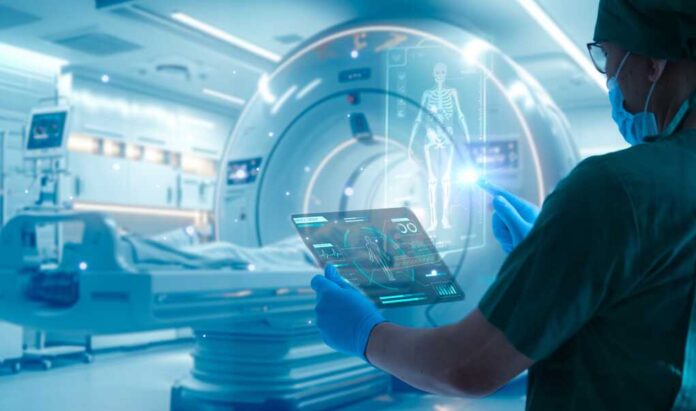
A new brain imaging discovery shows your brainstem can target pain relief with pinpoint accuracy—revealing a natural, built-in “pain control switchboard” you never knew existed.
Story Snapshot
- Researchers used ultra-powerful 7-Tesla MRI to map pain-processing regions in the human brainstem.
- Distinct brainstem circuits handle pain signals from the face versus the limbs, suggesting specialized pathways.
- This built-in pain control system could explain why some people experience pain relief more effectively than others.
- The findings could spark new, non-drug therapies for chronic pain by harnessing the brain’s natural mechanisms.
The Brainstem’s Secret: Precision Pain Control
Scientists have long puzzled over why the same injury feels more or less painful depending on its location. Recent research using 7-Tesla magnetic resonance imaging—a technology that lets us peer into the brain at a level of detail once thought impossible—has revealed a hidden system in the brainstem that manages pain with a surgeon’s precision. The brainstem, often dismissed as a mere relay between the body and higher brain, turns out to be a sophisticated command center, orchestrating unique responses to pain in the face versus pain in the limbs.
Watch: Mayo Clinic Minute – 7 Tesla – Providing hope by seeing the previously unseen
The 7-Tesla MRI scans allowed researchers to observe, for the first time, distinct clusters of neural activity lighting up when participants experienced facial pain, compared to entirely different clusters firing for limb pain. This suggests that the brainstem doesn’t simply relay pain signals up the chain; it actively filters, modulates, and even suppresses them, based on where those signals originate. Such specificity hints at evolutionary advantages—protecting the head and vital sensory organs with swift, potent responses, while allowing the rest of the body a different, possibly more measured, approach.
Breakthrough brain discovery reveals a natural way to relieve pain https://t.co/Q4G3DrUr7z
— Zicutake USA Comment (@Zicutake) November 4, 2025
Implications for Chronic Pain and Everyday Relief
The discovery of this precision pain control system could radically reshape how we treat chronic pain. For millions suffering from conditions like neuropathy, fibromyalgia, or persistent post-surgical pain, mainstream solutions often rely on medications that blunt pain indiscriminately, leading to side effects and diminishing returns. But if the brainstem can be coaxed into dialing down pain naturally—targeting only the affected region—treatments could become more effective and far less invasive.
Why Your Face Hurts Differently Than Your Foot
The brainstem’s ability to distinguish between facial and limb pain is no evolutionary accident. Facial injuries threaten critical functions—breathing, eating, communicating—so the brainstem’s rapid, intense response makes sense. By contrast, pain in the limbs, while still essential for survival, often benefits from a more nuanced approach, allowing us to continue moving or defending ourselves even when hurt. This new understanding helps explain why dental pain can feel overwhelming, while a stubbed toe, though agonizing, is easier to shake off.
For the person living with chronic pain, these findings offer hope. If the brain’s own networks can be trained or modulated to down-regulate pain, then personalized, region-specific relief might soon be within reach. The era of one-size-fits-all painkillers could be drawing to a close, replaced by therapies that harness the body’s own neurological wisdom. This research opens a new chapter in the story of pain—one where the brain, not the pharmacy, holds the master key.
Sources:
https://www.sciencedaily.com/releases/2025/11/251104013027.htm


















